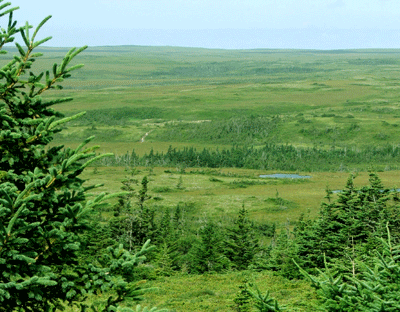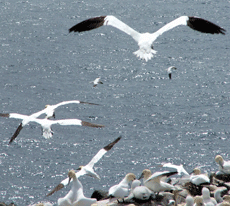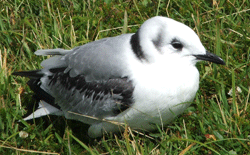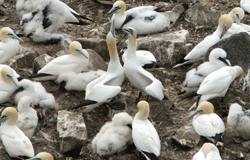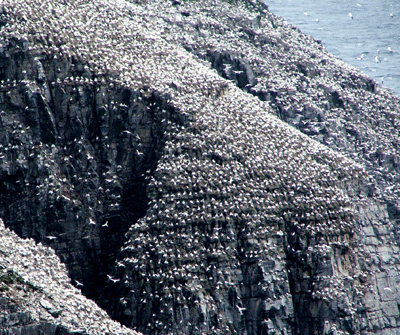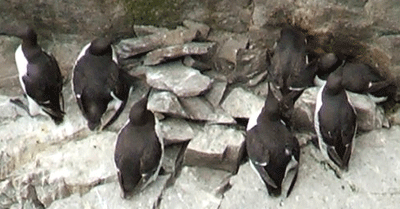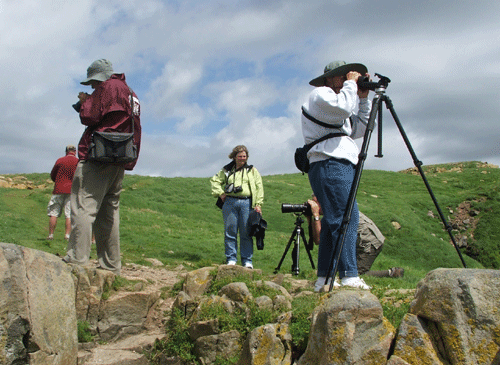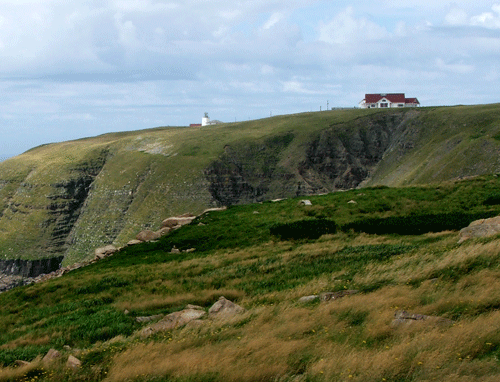
Tales of a 21st Century Gypsy
August 8, 2006.
Newfoundland and Mongolia
Reluctantly, I left St. Johnís Tuesday morning to head south to the Cape St. Maryís Ecological Preserve, the seabird breeding ground. The day was wild and windy, clouds scudding across the blue skies, but the rains were holding off and temperatures were in the sixties. So it was good weather for Newfoundland.
I hadnít known what to expect when I left St. Johnís. The previous Saturday the world was lost in fog, and I had no idea what the landscape looked like. What a surprise! I had expected to be surrounded by forests, with occasional glimpses of the water and
the shore. Instead I found myself in a vast open space, gently rolling hills punctuated by shrubs, pools, and grasses. Hardly any trees, and nothing to show that the land was claimed by anyone. No fences, no ploughed fields, no paddocks. No grazing animals. Scarcely any roads other than the ones I was driving on. And scarcely any people. Occasionally a small village with a
